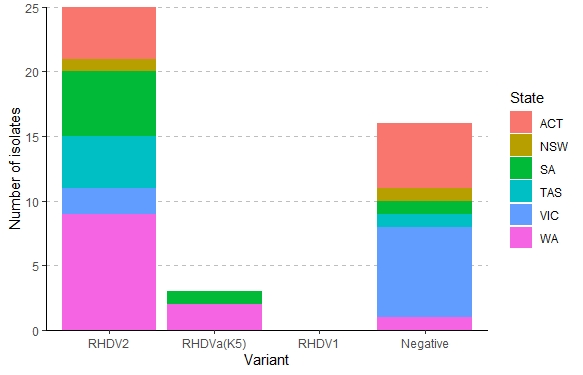October update
We have seen an increase in samples submitted for rabbit calicivirus over September and October, especially from WA. This is likely associated with the warmer weather moving into Spring and associated increase in fly activity. RHDV2 continues to be the dominant virus detected, although K5 was also detected in WA and SA. Quite a few samples from rabbits that have died suddenly continue to be negative for all rabbit caliciviruses. However, the proportion of negative samples is especially low in WA, suggesting that RHDV is very active there at the moment.
Biosecurity precautions should be increased for domestic rabbit owners given the current virus activity levels. For example,
- Decontaminate hands, shoes and clothing before handling rabbits
- Keep your pet rabbit indoors
- Regularly decontaminate equipment and materials including cages, hutches, bowls etc, with either 10% bleach, 10% sodium hydroxide, or a parvocidal disinfectant such as F10SC or Virkon
- Control insects (especially flies) as much as possible both indoors and outdoors
- Rabbit-proof your backyard to prevent access by wild rabbits
- Limit contact between and handling of unfamiliar pet rabbits
Pet rabbits should also be vaccinated with Cylap®, although we are aware that there are national shortages of this vaccine at the moment.
More information can be found on the RSPCA website.

Number of isolates of each RHDV variant detected by state, September to October 2020
